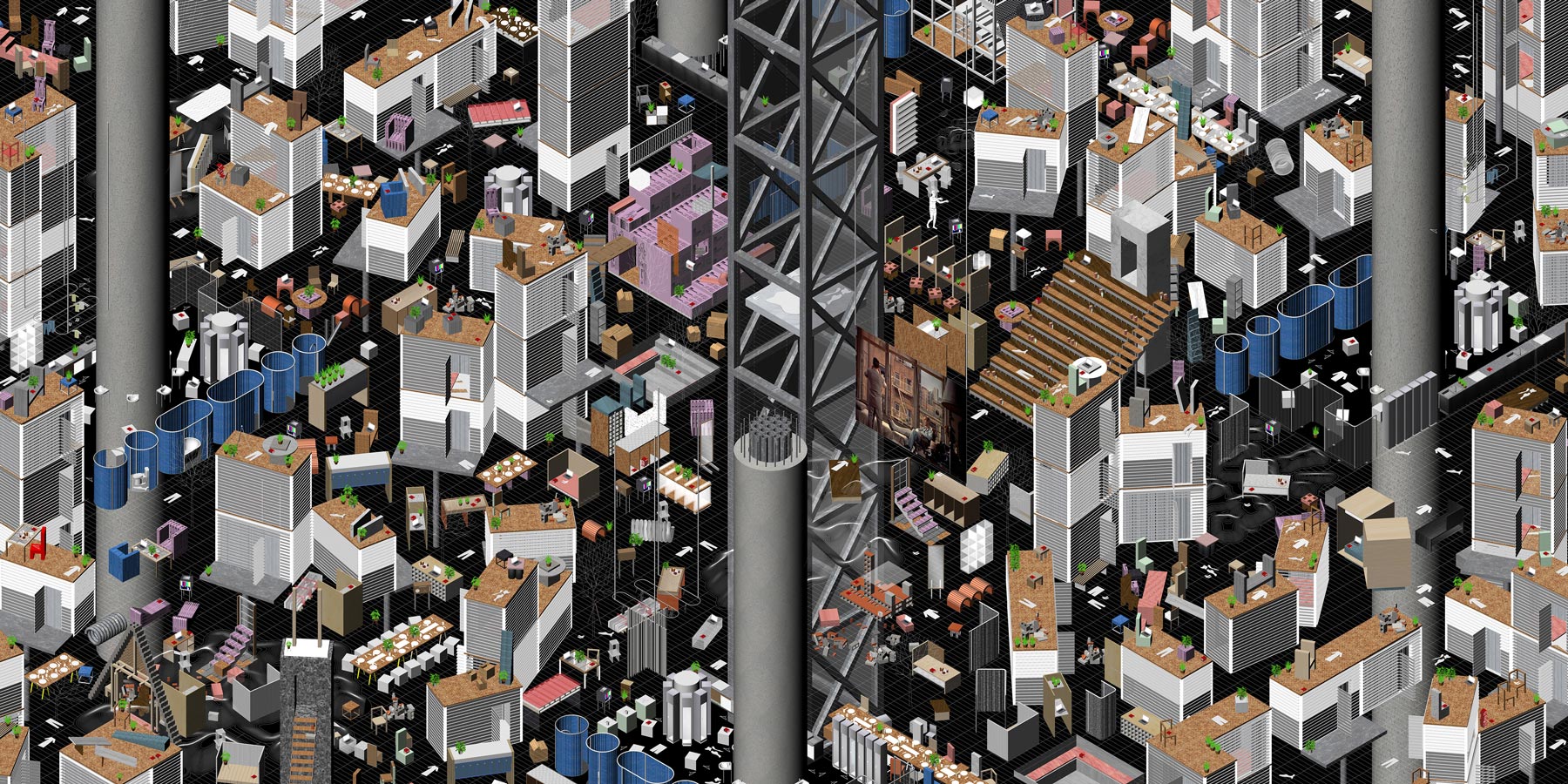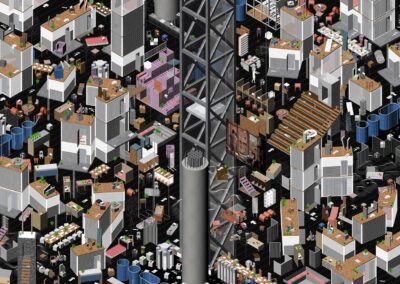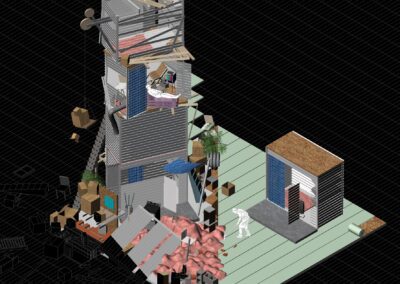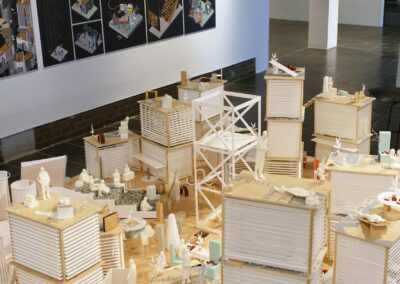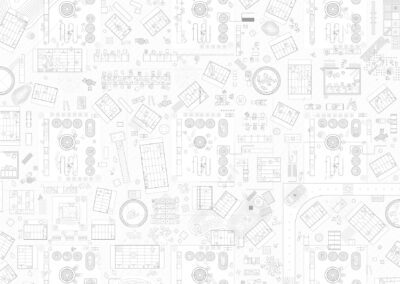Toward a Re-politicization of the Collective Dwelling or; an Urbanism of Stuff
An Urbanism of Stuff is a siteless model for shared domestic space — a model which proposes an alternative to traditional thinking on how we might live, together. Rather than a top-down proposal for a static, homogenizing architecture like housing blocks or towers of the past, this proposition begins at the scale of furniture — one tied intimately to the human body. By shrinking privately owned property to the barest minimum — that is, a bed and small storage space — the proposal extracts and recomposes the excess material of the aforementioned outdated models into an Urbanism of Stuff. The central thesis questions preconceived notions of private ownership and cellular living, where within a given apartment building or housing development each tenant owns a dedicated space in their home for a kitchen space, living space, dining space, toilet space, etc. Apart from a wasteful redundancy of space and commodities, I am arguing that the contemporary dwelling becomes depoliticized through the sequestering of individuals into private cells, where the opportunity for debate, exchange and dispute amongst the public all but disappears.
All furnitures outside of the privately owned unit are shared. The design of each piece of furniture is made of simple building materials which are encouraged to be composed and recomposed toward continually changing ends. The system is intentionally resists modularity, so as to prevent overly prescriptive organizations. The mobility of these furnitures is fundamental to the project, reflecting and accommodating the transient nature of today’s workflows and living patterns.
The only owned property within this system is a 60 sq. ft. unit hosting a bed and a small space for one’s clothes and most personal possessions. These units can be arranged in any number of configurations to accommodate different family types, groups of friends, or individuals.
Furniture sits as infill within a larger system of active building structure, performing multiple functions — locations for working, napping, bathing, fucking, eating or storing — amongst a slough of others. In addition to providing structural support, plumbed wet cores host all utilities, including shared bathrooms, kitchens, and laundry. The number of amenities is determined by the number of residents which share them. These structural cores provide a regimented internal logic in the project a confetti of furniture can move within. A prototype rather than an actual building with a site, this system is conceived of as deployable amongst any number of different building conditions.

